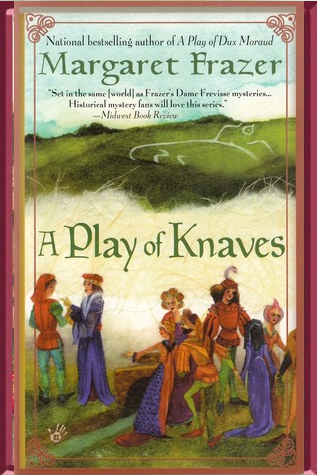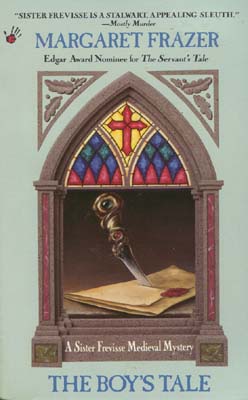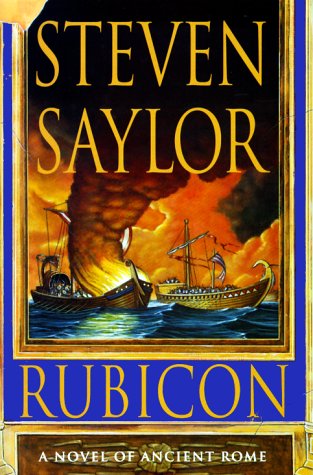I received this book for free from the library in exchange for an honest review. This does not affect my opinion of the book or the content of my review.
Source: the library
The Servant's Tale
by
Margaret Frazer
historical mystery in a paperback edition that was published by Berkley on November 1, 1993 and has 240 pages.
Explore it on Goodreads or Amazon
Other books by this author which I have reviewed include A Play of Knaves, A Play of Lords, A Play of Treachery, A Play of Piety, Murder Most Medieval: Noble Tales of Ignoble Demises, A Play of HeresyCoventry, Easter, plays, murder, spies, guilds, mercer, jealousy, Judas, theater, directing, acting, suicide, costumes, religious plays,, The Novice's Tale, The Outlaw's Tale, The Bishop's Tale, The Murderer's Tale, The Boy's Tale, The Prioress' Tale, The Maiden's Tale, The Squire's Tale, Clerk's Tale, The Bastard's Tale, The Hunter's Tale, The Widow's Tale
An Edgar Award-nominee, it’s second in the Sister Frevisse medieval mystery series based in a nunnery, St. Frideswide, near Prior Byfield outside Oxfordshire. The story revolves around Dame Frevisse, one of the nuns in the year of Our Lord 1434 at Christmastide.
Interestingly enough, Basset and his traveling troupe appear in this installment (from her Joliffe the Player series that begins with A Play of Isaac).
My Take
It’s a woman’s worries about her family. Keeping them safe. It’s ignorance about the world, about oneself.
Another very good story from Frazer even if the killer was too obvious. Frazer does such a beautiful job of the language and setting a medieval scene. This one provides a more in-depth look at the everyday life of a villein and the constrictions on their movements as well as how they see such “godless”, landless men as…gasp…players!
The feudal system has its pluses and minuses. In this story, it’s rather like a factory job with built-in nepotism. The system keeps carrying you along until the man of the house really screws up. If he dies, his oldest son, if he’s old enough or strong enough, inherits and carries on. It’s also interesting to read of the horror people tied to the land have of those who are not. Say what you will about our current society and our lack of security, I’d rather this with its freedoms than the ignorance of medieval serfs bound to one small area.
I did enjoy Dame Frevisse’s moves to get around Montfort, although I don’t think this story had the dramatic depth as the first one.
The Story
It’s been a struggle for years, Meg having to cope with Barnaby and his boasts, his drinking. This job at the priory is her own secret. The profits hoarded to fund her dream of freedom for her youngest. Now if only her children would cooperate. Help around the cottage. Only Sym is too much like his father with his boasting, quickness to fight, and preference for ale.
And Barnaby is on Lord Lovel’s short list. If he can complete this errand successfully, the family has a chance of being kept on…if not…
>But it seems that Meg and her family’s luck may be out when a troupe of players shows up at the priory with a sorely injured Barnaby. And the presence of the players brings out strong feelings on many sides. Feelings that are taken advantage of by a murderer, or murderers, as one by one, people die. Sym’s fight with Joliffe at the tavern after Sym and Ellis’ altercation on the green. Hewe is spending too much time with the players with an interest in following them. The sister’s pain and feelings of joy for God. All contribute to the deaths.
The good is the joy Dame Frevisse derives from conversation with intelligent people who have traveled the roads as she did with her parents. The bad is the fear of the unknown, of loss…taking the easy way out when Montfort arrives.
–That phrase comes to mind…”he can’t handle the truth”. And, boy, if that ain’t the truth about Montfort…!
The Characters
Dame Frevisse is in charge of the guesthouse. Domina Edith heads up this order of Benedictine nuns. Dame Claire is their healer. Sister Amicia is frivolous and gossipy. Sister Thomasine is a nun with a true calling (see The Novice’s Tale). Dame Alys is the cellarer in charge of the kitchens and Domina Edith’s second-in-command. Not the best choice as she hasn’t any patience and a strong preference for complaining. Dame Perpetua is in charge of the novices. Father Henry is the priory priest. Sister Juliana, Sister Lucy, Sister Fiacre whose brother’s perfidious desires lost Bassett his sponsor, and Sister Emma.
Annie Lauder is the priory’s laundress. Roger Naylor is the priory’s steward; he does his best for the priory but he conflicts with Dame Frevisse.
em>The Villagers:
Meg struggles to survive the fall down the feudal ladder her husband Barnaby‘s alcoholism is pushing her and their family. Sym is their oldest son at 16; he seems to be following in daddy’s footsteps. Hewe is more his mother’s son, but he doesn’t want to be a priest.
Gilbey Dunn is their neighbor and has been agitating to be given Barnaby’s strips of land. Now he seeks them through Meg.
The Players:
Thomas Bassett is the leader of this group of players and well understands how unwelcome his type is in any decent house. His daughter Rose tumbles to attract audiences and helps to collect money. Her young son Piers plays angels, demons, and young ones in their performances. Ellis and Joliffe who plays the female roles round out the remaining members of this smaller troupe. Tisbe is with them and has thrown out a shoe.
Thomas Chaucer, Dame Frevisse’s uncle-by-marriage, is mentioned. Master Montfort is the king’s crowner. He must see the body and ask the questions to determine how someone died and, if someone did it. Hopefully, someone will take him by the hand and lead him to the truth…he prefers the easiest choice.
The Cover and Title
The cover is a repeat of that from The Novice’s Tale but with turquoise marble panels. The view through the window is of a leather-covered table showcasing an orange with a knife through it.
The title reflects the main character around whom this tale revolves, The Servant’s Tale.















